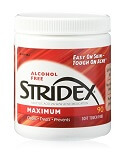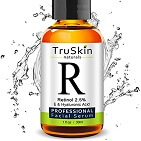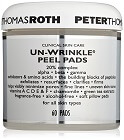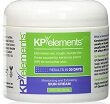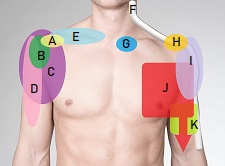- Home
- Common Shoulder Problems
- Shoulder Acne
- Acne Treatment
Keratosis Pilaris Treatment
Written By: Chloe Wilson BSc (Hons) Physiotherapy
Reviewed By: SPE Medical Review Board
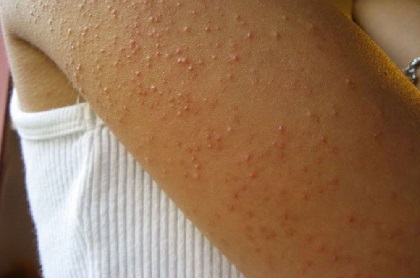
Keratosis pilaris treatment helps to get rid of those annoying and embarrassing bumps typically found on the back of the upper arms.
Keratosis pilaris is a common type of arm acne that manifests as small red or white bumps that make the arm look rather like plucked chicken skin.
It is caused by excess keratin blocking pores causing areas of rough goosebumps.
Keratosis pilaris treatment is very similar to the treatment for other types of shoulder and arm acne, so whatever the cause of your spots, these treatments should help.
We will look at which ingredients to look out for in creams, cosmetics, moisturisers and body washes, useful daily habits to adopt and what things to avoid if you want to treat and prevent shoulder acne!
What Is Keratosis Pilaris?
Keratosis Pilaris is a skin condition where the body produces too much of the protein keratin.
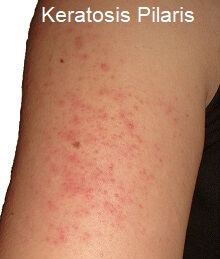
Keratin is the key structure of the outer layer of human skin and protects the skin from damage and infection.
With keratosis pilaris, excess keratin accumulates around hair follicles blocking pores. Small, rough, red or white bumps develop, anywhere from 10-100 in number.
The surrounding skin may be slightly red, known as erythema, due to inflammation or dilation, opening, of the small blood vessel just under the skin.
In some cases a small, coiled hair can be seen trapped underneath a bump. Occasionally, it is accompanied by itchiness.
Keratosis Pilaris Causes
The most common keratosis pilaris causes are:
- Genetics: There is a strong genetic link with keratosis pilaris - it is autosomal dominant meaning that there is a 50% chance of it being passed on to any children
- Eczema: It tends to be worse in people who suffer from dry skin such as eczema.
- Weather: Symptoms tend to be worse in the winter as the skin dries out.
Keratosis Pilaris is a very common condition affecting nearly 50-80% of adolescents. Symptoms usually develop under the age of 10 and tend to get worse during puberty.
Symptoms of keratosis pilaris tend to improve with age but it does affect up to around 40% of adults, typically affecting the outer part of the upper arms and/or the thighs.
Keratosis pilaris is a completely harmless condition and although in most cases it improves over time, many people feel self-conscious and therefore seek keratosis pilaris treatment.
Arm Acne & Keratosis Pilaris Treatment
There are lots of different options for shoulder acne and keratosis pilaris treatment:
1. Salicylic Acid
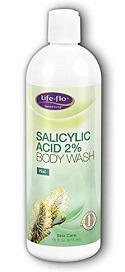
Salicylic acid is a popular shoulderacne and keratosis pilaris treatment. It is a kerytolytic exfoliator which softens keratin and helps to shed the outer layer of skin.
Salicylic acid increases the moisture in skin and helps to dissolve the plugs that block pores and hair follicles. It can also penetrate deep into pores so it exfoliates both inside and out and kills bacteria.
Salicylic acid can also reduce sebum production, a common cause of arm acne – visit the shoulder acne section to find out more.
There are a whole range of products out there that contain salicylic acid including pads, serums, sprays, gels, moisturisers and shampoos (it also helps get rid of dandruff!).
Here are some of our favourite arm acne and keratosis pilaris products containing salicylic acid:
You should continue to use salicylic acid products even once your symptoms have cleared else the pores will quickly become blocked again and the acne will return and you’ll have to start your keratosis pilaris treatment all over again.
Salicylic acid can irritate sensitive skin so start with a small amount, once a day. Your skin should gradually get used to it, and once this happens you can use it more frequently as part of your keratosis pilaris treatment, up to 2-3 times a day.
2. Retinoids
Retinol based products are another good option for keratosis pilaris treatment. Available as creams, gels or lotions, they contain vitamin A which encourages cell turnover, reduces keratinisation and unclogs pores, all of which helps treat keratosis pilaris. It usually takes around 6 weeks or longer of regular use of retinods to notice the effects.
These are some of our favourite retinol products for acne and keratosis pilaris treatment.
As with salicylic acid, using retinoids can make your skin more sensitive to the sun, and can irritate the skin, especially when you first start using it for shoulder acne treatment. This usually settles with continued use.
3. Avoid Soap
Soap bars actually tend to clog pores rather than open them. Stick to body wash designed for keratosis pilaris treatment as we have discussed above instead – they are much more effective, if slightly more expensive.
4. Moisturisers
Daily use of non-oily moisturisers is an important part of keratosis pilaris treatment. Symptoms tend to get worse when the skin is dry, so regularly moisturising can really help.
If you suffer from acne, avoid oil-based moisturisers as they can end up blocking pores. You can opt for regular moisturisers, or there are some that are specially designed for keratosis pilaris.
5. Be Gentle
It can be tempting to try and rub away those annoying chicken skin bumps but harsh exfoliators, body scrubs and loafers should not be part of keratosis pilaris treatment. You are more likely to make the inflammation worse. Instead, use a soft cloth when washing and rub gently rather than vigorously.
6. Water Temperature
When showering or bathing, stick to lukewarm water if you have acne. Hot water can dry the skin and cold water closes pores. Also try to keep your wash time less than ten minutes to also prevent the skin drying out.
7. Photodynamic Therapy
Another treatment option with shoulder acne and keratosis pilaris is Photodynamic therapy (PDT). PDT is a special treatment where a photosensitising agent such as Levulan is applied to the skin and then activated with a light source such as Blu-U light.
The photosensitising agent is absorbed by actively proliferating cells, new cells that are being produced, such as keratin and sebum. When exposed to the light source, the agent is activated which destroys the cells. This helps to reduce pore size and shrink oil glands, making it an effective keratosis pilaris treatment option.
Once the agent has been applied to the skin, you usually wait 30-60 minutes before using the light for just a few minutes. The agent is then washed off.
People usually require 3-5 sessions of PDT, 2-4 weeks apart. Some people find it is a very effective keratosis pilaris treatment, but the evidence is lacking at this stage.
8. Laser Hair Removal
Laser hair removal is sometimes used for keratosis pilaris treatment to decrease hair growth in the affected area. Less hairs mean less follicles to get blocked and therefore less spots.
It used to be that you had to go to a professional for this, but now it is easy to do at home with handheld laser hair removal devices.
Keratosis Pilaris Recovery
There is no one specific long-term cure for the keratosis pilaris, but many people notice a real improvement with regular use of these arm acne treatments. Different things work for different people but there tends to be most success when treatment is continuous, and a combination of treatments are used.
As we have looked at here, there are a number of different options for keratosis pilaris treatment. They tend to focus on unblocking pores and hair follicles and are therefore very similar for treatments for other types of shoulder and arm acne. So if you are unsure if your shoulder or arm acne is this or something else, these treatment methods should help anyway!
What Else Can Help?
Keratosis pilaris does get better with time, and while none of these treatments is a permanent cure, they can help reduce symptoms when used regularly. Don't stop using them as soon as symptoms have improved or it is likely to return.
If you aren't sure if this is the cause of your arm acne, do see your doctor, but rest assured these keratosis pilaris treatments also work for most other types of shoulder acne, so they should help.
Related Articles
Page Last Updated: May 16th, 2024
Next Review Due: May 16th, 2026
